Hellenistic Warfare › Greek Colonization » Ancient origins
Articles and Definitions › Contents
- Hellenistic Warfare › Ancient History
- Greek Colonization › Antique Origins
Ancient civilizations › Historical and archaeological sites
Hellenistic Warfare › Ancient History
Definition and Origins

When Alexander the Great died in 323 BCE, he left behind an empire devoid of leadership. Without a named successor or heir, the old commanders simply divided the kingdom among themselves. For the next three decades, they fought a lengthy series of wars - the Wars of the Diadochi or Wars of the Successors - in a futile attempt to restore the tattered kingdom.Although the Hellenistic Age saw Greek language, art and philosophy flourish throughout Asia, there were few advances in military tactics. Instead, it was a time of “kingdoms and their armies.” The successors inherited an army borne out of the reforms of Philip II of Macedon. He was an innovator; the first Greek to master siege warfare, and with his son Alexander, they made Macedon the foremost power in both Greece and Asia. Together, Alexander and his father would create an army unlike anything the ancient world had ever seen.
PHILIP'S MILITARY REFORMS
From his father Amyntas III and brother Perdiccas III, Philip acquired an army that was badly in need of restructuring. On his ascension to the throne in 359 BCE, he realized that the old ways were no longer dependable. He immediately initiated a series of major military reforms. To begin with, he increased the size of the army from 10,000 to 24,000, and enlarged the cavalry from 600 to 3,500. To make the army unified he issued new uniforms and made each soldier swear an oath to the king.A soldier was no longer loyal to his home town or province but loyal to the king and Macedon. While he retained the traditional phalanx - whose very nature required constant drilling and obedience - he made a number of improvements, adding a more effective shield and replacing the old Corinthian helmet with one that provided for better hearing and visibility.
THE SOLDIERS WHO FOUGHT IN THE HELLENISTIC PERIOD WERE MOSTLY MERCENARIES WITHOUT ALLEGIANCE TO ANY LEADER OR ANY PLACE.
Among several changes in weaponry, Philip added the ominous 18 foot sarissa which had the advantage of reaching over the much shorter spears of the opposition. Besides the sarissa, a smaller double-edge sword, or xiphos, for close-in-hand fighting was issued. And, lastly, he created a corps of engineers to develop siege weaponry. In the end Philip took a poorly disciplined group of men and turned them into a formidable, more professional army. This was no longer an army of citizen-warriors but an efficient military force, eventually subduing the territories around Macedon as well as subjugating most of Greece. It was this army that helped Alexander to cross into Asia and conquer the Persian Empire, but it was also the same army, with relatively few changes, that the successors used throughout their three decades of war.
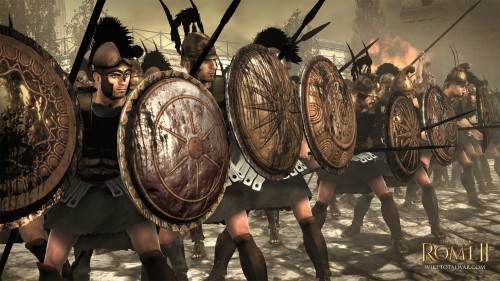
Greek Phalanx
THE WARS OF THE DIADOCHI
The years that followed Alexander's death were ones without peace; it was a time of permanent war, or as one historian put it “a time of large scale rivalries.” Unlike the armies of Macedon who battled for Philip and Alexander out of loyalty, the soldiers who fought for the successors were mostly mercenaries - many were not Greek or Macedonian - without allegiance to any one or any place. They often fought for the highest bidder. For example, the commander Eumenes, an ally of Perdiccas, sent people throughout Asia Minor as recruiting agents before his battle with Antigonus. In 306 BCE Ptolemy, the regent of Egypt, bribed the army of Antigonus and his son Demetrius to defect.
Unlike the war against the Persians where men fought for an ideal and devotion to their king, these mercenaries fought in “nations without borders” in wars to simply solve political differences. These soldiers did not fight to defend their home and there was little loyalty among the successors themselves. They constantly made and broke alliances. This constant war and lack of loyalty among one's army made it easy to rely on the traditional military maneuvers (the phalanx). During the three decades of war, the real centers of power were the fortified cities along the eastern coast of the Mediterranean Sea. The successors relied on those siege innovations developed during the times of Philip and Alexander, albeit improving their size, range and accuracy. Although Demetrius I of Macedon, appropriately named the Besieger, made some changes --- as seen in his attack on Rhodes, Greek siege technology would finally reach its height by the 2nd century BCE.

Diadochi Satraps 323 BCE
SIEGE WARFARE
Siege technology was not new; however, it existed centuries before it reached Greece. By the 8th century BCE, the Assyrians had become the masters of siege warfare, holding their vast empire together with both siege strategies and terror - impaling a captive made many hesitant to surrender. These tactics - brought to fruition by their corps of engineers - included undermining walls, lighting fires beneath wooden gates, using ramps to breech walls, mobile ladders, and archers to provide cover.However, most importantly they developed the siege engine which was a multi-storied wooden tower with a turret atop and battering rams at the base. Some of these towers even had a drawbridge to deposit men on the top of a city ’s walls.
Initially, the Greeks failed to employ siege tactics successfully because their infantry, the heavily armoured hoplite, was thought to be ill-suited for its use. However, around the 4th century BCE basic siege tactics finally arrived in Greece. Early Greek warfare such as in the Peloponnesian War (460 – 445 BCE) had largely been defensive. Sparta had failed to take Athens because of her walls. Remember, it took over ten years for the city of Troy (according to Homer ) to finally fall, and that was due to treachery - a wooden horse. This is not to say there weren't major offensive battles - Marathon and Thermopylae are excellent examples - but mostly, cities avoided such tactics. In one of the few clashes using siege technology the statesman and commander Pericles of Athens used rams and tortoises (sheds to the protect undermining of walls) to defeat Samos (440 – 339 BCE). Later, Sparta took Plataea (429 – 427 BCE) using ramparts (earthen embankments), siege mounds and battering rams. Unfortunately for the besieged, to win they used the oldest of all tactics, starvation. In the end Sparta won, selling the women into slavery, executing the men, and burning the city.
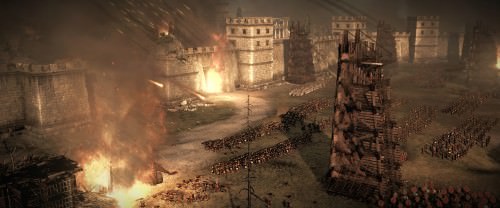
Siege Warfare
By 375 BCE Greeks were fully aware of the importance of siege weapons such as towers on wheels, scaling ladders, rams, and tunneling. With Philip's reforms the Macedonians were now the most powerful force in Greece, setting their sights eastward to the Persian Empire. Through his corps of engineers, he developed arrow-firing catapults and siege towers. Under Alexander, siege craft became a principal weapon in his efforts to defeat King Darius. His victories at Halicarnassus, Tyreand Gaza are testaments to alexander's use of siege weaponry. In the field he not only added a more mobile, lighter cavalry armed with javelins but also made better use of the Companion Cavalry, arming them with sarissas. Under the successors, major advances included the adoption of scythed chariots (as used by the Persians at Gaugamela ) and the use of Indian elephants - Seleucus, Antigonus and Eumenes all used elephants.
THE LAMIAN WAR
It did not take along after Alexander's death for the successors to begin quarreling among themselves. War almost immediately broke out. In Greece an Athenian by the name of Leosthenes, after hearing of the king's death, convinced his fellow Athenians and the neighboring Aetolians to go to war against Macedon. The regent Antipater responded instantly and the Hellenic or Lamian War began (323 -322 BCE). Unfortunately, Antipater was besieged at Lamia until Craterus arrived with additional troops. The war ended with the death of Leosthenes in the subsequent battle at Crannon in 322 BCE. Further south, in Egypt, tension increased between Perdiccas and Ptolemy. Perdiccas had control of Alexander's body and planned on returning it to Macedon where a newly-prepared tomb awaited it. Unfortunately, the body was stolen by Ptolemy and taken to Memphis. Perdiccas demanded it to be returned, and when it wasn't, he declared war. Three failed attempts to cross into Egypt; unfortunately, forced his men to rebel and kill Perdiccas in 321 BCE (no one else really liked him anyway).

Macedonian Silver Tetradrachm
ANTIGONUS AGAINST EUMENES
A major area of discord was between Antigonus I Monophthalmos (One-Eyed) and Eumenes - the regent of Cappadocia and head of Perdiccas's forces in Asia Minor. In 321 BCE at the Treaty of Triparadeisus where the old divisions of the empire formulated in the Partition of Babylon had been reaffirmed, Antigonus was given the daunting task of killing Eumenes (the treaty had condemned him to death). With Perdiccas dead, Eumenes was left without an ally; he later joined with Polypheron and Olympias, Alexander's mother.
In 317 BCE Eumenes - the commander of the Silver Shields - met with Antigonus at Paraetacene. Originally called the Shield Bearers, the Silver Shield were an elite group of hypaspists created by Philip II. After their heroics at Hydaspes, Alexander painted their shields silver, hence the name change. Although Eumenes inflicted greater casualties, Antigonus was considered the victor by a technicality. After the battle, Eumenes had chosen to return to the battlefield, camp and bury the dead. His men refused; they would not leave their baggage train. Antigonus, seizing the opportunity, camped there instead and cremated his dead which was the prerogative of the victor. Eumenes was incensed. The two would meet again at Gabiene where Eumenes would finally be defeated and meet his death (when his own men betrayed him). Supposedly, Antigonus allowed the former commander to starve for three days before sending someone to assassinate him. At that point Antigonus and his son controlled much of the territory from the Hindu Kush to the Aegean Sea.
THE SUCCESSOR KINGDOMS
However, the wars over the Asian territory would continue. Seleucus had finally established himself in Babylon. In Greece Antipater's son Cassander gained control of Macedonia forcing the regent Polypheron out. Since Antigonus controlled much of the eastern Mediterranean, he and his forces marched into Babylon causing Seleucus to flee to Egypt and form an alliance with Ptolemy. After Antigonus besieged the island city of Tyre, he moved his army into Syria ; however, his advances were stopped. His strong desire to reunite Alexander's kingdom brought Antigonus against the combined forces of Ptolemy, Lysimachus, Cassander, and Seleucus. After Demetrius was defeated by Ptolemy at the Battle of Gaza in 312 BCE, Seleucus took back Babylon. With this defeat, a very limited peace was declared.
DEMETRIUS THE BESIEGER
The only successor to demonstrate an effective use of siege tactics was Demetrius, the Besieger. In his attack on the city of Rhodes, the capital of the island of Rhodes in the eastern Mediterranean (305 -303 BCE), Demetrius used a number of devices in his attempt to fell the city - mining, artillery, the helepolis or city-taker (a siege tower), carrying catapults, scaling ladders, and carrying rams.. His siege of Rhodes was actually part of an on-going war with Ptolemy. They both saw Rhodes's location and five harbors as an ideal trade center. Initially, Demetrius tried to take the city from the sea in a night assault with ships (the traditional trireme ) which possessed stone-throwing artillery and archers. The Rhodians countered by destroying one of the ship's siege towers with fire. Another attack found the city sinking two more of Demetrius's ships. Realizing an attack from the sea was not going to be successful, Demetrius withdrew. Next, he attacked from the land, imposing a blockade with the hope of using the old-fashioned method of starvation.

Demetrius I of Macedon
It was at this time that Rhodes received help from Ptolemy who supplied the city with provisions. To counter, Demetrius used a 114 foot tower - the helepolis - which took 200 men to operate. Although he brought down the outer wall, to his surprise, the city had built an inner wall. With little choice, a temporary peace was reached. During the lull, Rhodes rebuilt the outer wall, adding a moat. Demetrius tried a second assault, but the city held on. After a 15 month siege, he finally relented and abandoned his assault. Utilizing the salvaged metal garnered from the abandoned siege towers, the people of Rhodes then built the Colossus of Rhodes, one of the seven wonders of the ancient world.
The successors continued to fight among themselves, but the siege of Rhodes marked the “high-water” mark of Hellenistic siege warfare. Although sieges would continue, the massive siege towers employed at Rhodes would never be used again.And, Demetrius would finally realize defeat. Lysimachus, the regent of Thrace, allied with the regents Seleucus and Cassander against the elderly Antigonus and Demetrius at the Battle of Ipsus in 301 BCE; a battle that would bring about both the defeat and death of Antigonus. Lysimachus moved across the Thracian border into Macedon and forced Demetrius out. Demetrius and his army crossed the Hellespont into Asia Minor, confronting the forces of Seleucus. Unfortunately for the Besieger, he was immediately captured and died in captivity in 283 BCE. By 281 BCE, all of the old successors were gone -Antigonus, Demetrius, Seleucus, Lysimachus and Ptolemy were dead. Cassander had executed Alexander's wife Roxanne, his son Alexander IV and his mother. By all accounts the wars had ended. Three dynasties were all that endured, and they would fall one day to the Romans.
CONCLUSION
War had always been an essential part of Greek history. From the days of Homer and his stories of the siege of Troy in The Iliad, war had always been a source of glory or arête. The men who fought for Philip and Alexander did so out of loyalty, both their king and Macedon. The successors fought only to gain territory, using mercenaries to fight their battles. They maintained many of the old, traditional tactics of Alexander with few significant advances. Hellenistic warfare, at best, was merely a continuation of tried and tested strategies and weapons.
The true downfall of the successors and their kingdoms would come with the growth of Rome. During the conquest of Greece in the Macedonians Wars of the 2nd century BCE, the Greek phalanx met the Roman legion. The phalanx had always been effective throughout Greek history if only as a terrifying unit, but to be successful it had to fight on even ground and remain a solid unit - it was unsuccessful in individualised hand-to-hand combat. Unfortunately, the phalanx proved also to be inflexible. The Roman legion was far more efficient. The Macedonian Wars brought an end to Macedon and Greece and eventually to the dynasties of the successors. Rome not only conquered Greece but Asia Minor, Syria, Mesopotamia, and Egypt so that nothing remained of the great empire of Alexander.
Greek Colonization › Antique Origins
Definition and Origins
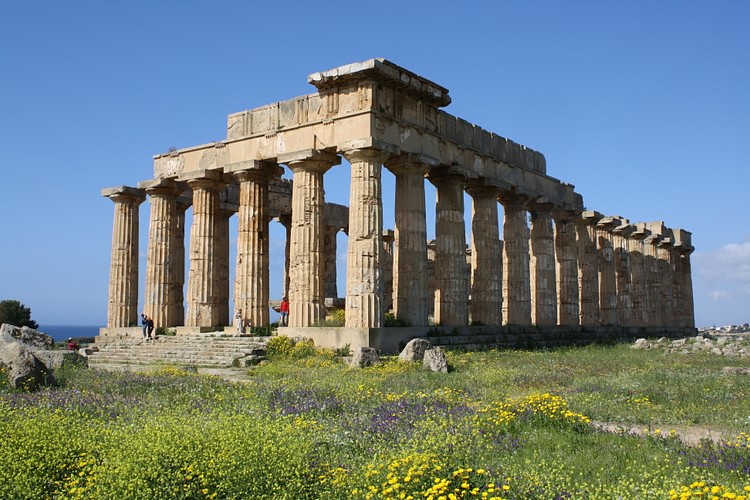
In the first half of the first millennium BCE, ancient Greek city -states, most of which were maritime powers, began to look beyond Greece for land and resources, and so they founded colonies across the Mediterranean. Trade contacts were usually the first steps in the colonization process and then, later, once local populations were subdued or included within the colony, cities were established. These could have varying degrees of contact with the homeland, but most became fully independent city-states, sometimes very Greek in character, in other cases culturally closer to the indigenous peoples they neighboured and included within their citizenry. One of the most important consequences of this process, in broad terms, was that the movement of goods, people, art, and ideas in this period spread the Greek way of life far and wide to Spain, France, Italy, the Adriatic, the Black Sea, and North Africa. In total then, the Greeks established some 500 colonies which involved up to 60,000 Greek citizen colonists, so that by 500 BCE these new territories would eventually account for 40% of all Greeks in the Hellenic World.
TRADE & RESOURCE OPPORTUNITIES
The Greeks were great sea-farers, and travelling across the Mediterranean, they were eager to discover new lands and new opportunities. Even Greek mythology included such tales of exploration as Jason and his search for the Golden Fleece and that greatest of hero travellers Odysseus. First the islands around Greece were colonized, for example, the first colony in the Adriatic was Corcyra ( Corfu ), founded by Corinth in 733 BCE (traditional date), and then prospectors looked further afield.The first colonists in a general sense were traders and those small groups of individuals who sought to tap into new resources and start a new life away from the increasingly competitive and over-crowded homeland.
THE PROCESS OF COLONIZATION WAS LIKELY MORE GRADUAL & ORGANIC THAN ANCIENT SOURCES WOULD SUGGEST.
Trade centres and free markets ( emporia ) were the forerunners of colonies proper. Then, from the mid-8th to mid-6th centuries BCE, the Greek city-states ( poleis ) and individual groups started to expand beyond Greece with more deliberate and longer-term intentions. However, the process of colonization was likely more gradual and organic than ancient sources would suggest. It is also difficult to determine the exact degree of colonization and integration with local populations. Some areas of the Mediterranean saw fully-Greek poleis established, while in other areas there were only trading posts composed of more temporary residents such as merchants and sailors. The very term 'colonization' infers the domination of indigenous peoples, a feeling of cultural superiority by the colonizers, and a specific cultural homeland which controls and drives the whole process. This was not necessarily the case in the ancient Greek world and, therefore, in this sense, Greek colonization was a very different process from, for example, the policies of certain European powers in the 19th and 20th centuries CE. It is perhaps here then, a process better described as 'culture contact' (De Angelis in Boyes-Stones et al, 51).
The establishment of colonies across the Mediterranean permitted the export of luxury goods such as fine Greek pottery, wine, oil, metalwork, and textiles, and the extraction of wealth from the land - timber, metals, and agriculture (notably grain, dried fish, and leather), for example - and they often became lucrative trading hubs and a source of slaves. A founding city ( metropolis ) might also set up a colony in order to establish a military presence in a particular region and so protect lucrative sea routes. Also, colonies could provide a vital bridge to inland trade opportunities. Some colonies even managed to rival the greatest founding cities; Syracuse, for example, eventually became the largest polis in the entire Greek world. Finally, it is important to note that the Greeks did not have the field to themselves, and rival civilizations also established colonies, especially the Etruscans and Phoenicians, and sometimes, inevitably, warfare broke out between these great powers.
MAGNA GRAECIA
Greek cities were soon attracted by the fertile land, natural resources, and good harbours of a 'New World' - southern Italy and Sicily. The Greek colonists eventually subdued the local population and stamped their identity on the region to such an extent that they called it 'Greater Greece' or Megalē Hellas, and it would become the most 'Greek' of all the colonized territories, both in terms of culture and the urban landscape with Doric temples being the most striking symbol of Hellenization. Some of the most important poleis in Italy were:
- Cumae (the first Italian colony, founded c. 740 BCE by Chalcis)
- Naxos (734 BCE, Chalcis)
- Sybaris (c. 720 BCE, Achaean/Troezen)
- Croton (c. 710 BCE, Achaean)
- Tarentum (706 BCE, Sparta )
- Rhegium (c. 720 BCE, Chalcis)
- Elea (c. 540 BCE, Phocaea)
- Thurri (c. 443 BCE, Athens )
- Heraclea (433 BCE, Tarentum)
On Sicily the main colonies included:
- Syracuse (733 BCE, founded by Corinth)
- Gela (688 BCE, Rhodes and Crete )
- Selinous (c. 630 BCE)
- Himera (c. 630 BCE, Messana)
- Akragas (c. 580 BCE, Gela)
THE GEOGRAPHICAL LOCATION OF NEW COLONIES IN THE CENTRE OF THE MEDITERRANEAN MEANT THEY COULD PROSPER AS TRADE CENTRES BETWEEN THE MAJOR CULTURES OF THE TIME.
The geographical location of these new colonies in the centre of the Mediterranean meant they could prosper as trade centres between the major cultures of the time: the Greek, Etruscan, and Phoenician civilizations. And prosper they did, so much so that writers told of the vast riches and extravagant lifestyles to be seen. Empedokles, for example, described the pampered citizens and fine temples of Akragas ( Agrigento ) in Sicily as follows; "the Akragantinians revel as if they must die tomorrow, and build as if they would live forever". Colonies even established off-shoot colonies and trading posts themselves and, in this way, spread Greek influence further afield, including higher up the Adriatic coast of Italy. Even North Africa saw colonies established, notably Cyrene by Thera in c. 630 BCE, and so it became clear that Greek colonists would not restrict themselves to Magna Graecia.
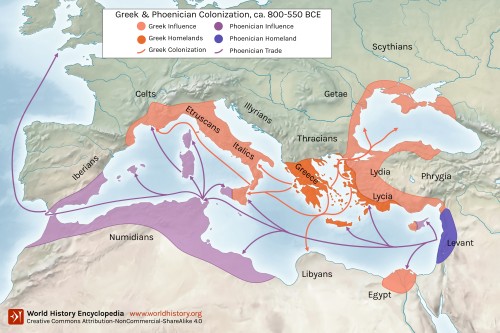
Greek and Phoenician Colonization
IONIA
Greeks created settlements along the Aegean coast of Ionia (or Asia Minor ) from the 8th century BCE. Important colonies included Miletos, Ephesos, Smyrna, and Halikarnassos. Athens traditionally claimed to be the first colonizer in the region which was also of great interest to the Lydians and Persians. The area became a hotbed of cultural endeavour, especially in science, mathematics, and philosophy, and produced some of the greatest of Greek minds. Art and architectural styles too, assimilated from the east, began to influence the homeland; such features as palmed column capitals, sphinxes, and expressive 'orientalising' pottery designs would inspire Greek architects and artists to explore entirely new artistic avenues.
FRANCE & SPAIN
The main colonising polis of southern France was Phocaea which established the important colonies of Alalia and Massalia (c. 600 BCE). The city also established colonies, or at least established an extensive trade network, in southern Spain. Notable poleis established here were Emporion (by Massalia and with a traditional founding date of 575 BCE but more likely several decades later) and Rhode. Colonies in Spain were less typically Greek in culture than those in other areas of the Mediterranean, competition with the Phoenicians was fierce, and the region seems always to have been considered, at least according to the Greek literary sources, a distant and remote land by mainland Greeks.
THE BLACK SEA
The Black Sea (Euxine Sea to the Greeks) was the last area of Greek colonial expansion, and it was where Ionian poleis, in particular, sought to exploit the rich fishing grounds and fertile land around the Hellespont and Pontos. The most important founding city was Miletos which was credited in antiquity with having a perhaps exaggerated 70 colonies. The most important of these were:
- Kyzikos (founded 675 BCE)
- Sinope (c. 631 BCE)
- Pantikapaion (c. 600 BCE)
- Olbia (c. 550 BCE)
Megara was another important mother city and founded Chalcedon (c. 685 BCE), Byzantium (668 BCE), and Herakleia Pontike (560 BCE). Eventually, almost the entire Black Sea was enclosed by Greek colonies even if, as elsewhere, warfare, compromises, inter-marriages, and diplomacy had to be used with indigenous peoples in order to ensure the colonies' survival.In the late 6th century BCE particularly, the colonies provided tribute and arms to the Persian Empire and received protection in return. After Xerxes ' failed invasion of Greece in 480 and 479 BCE, the Persians withdrew their interest in the area which allowed the larger poleis like Herakleia Pontike and Sinope to increase their own power through the conquest of local populations and smaller neighbouring poleis. The resulting prosperity also allowed Herakleia to found colonies of her own in the 420s BCE at such sites as Chersonesos in the Crimea.
From the beginning of the Peloponnesian War in 431 BCE, Athens took an interest in the region, sending colonists and establishing garrisons. An Athenian physical presence was short-lived, but longer-lasting was an Athenian influence on culture (especially sculpture) and trade (especially of Black Sea grain). With the eventual withdrawal of Athens, the Greek colonies were left to fend for themselves and meet alone the threat from neighbouring powers such as the Royal Scythians and, ultimately, Macedon and Philip II.
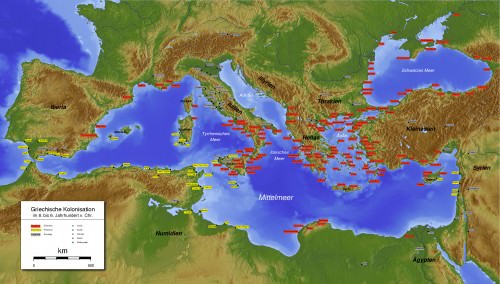
Greek & Phoenician Colonies
RELATIONSHIP WITH THE HOMELAND
Most colonies were built on the political model of the Greek polis, but types of government included those seen across Greece itself - oligarchy, tyranny, and even democracy - and they could be quite different from the system in the founder, parent city. A strong Greek cultural identity was also maintained via the adoption of founding myths and such wide-spread and quintessentially Greek features of daily life as language, food, education, religion, sport and the gymnasium, theatre with its distinctive Greek tragedy and comedy plays, art, architecture, philosophy, and science. So much so that a Greek city in Italy or Ionia could, at least on the surface, look and behave very much like any other city in Greece. Trade greatly facilitated the establishment of a common 'Greek' way of life. Such goods as wine, olives, wood, and pottery were exported and imported between poleis. Even artists and architects themselves relocated and set up workshops away from their home polis, so that temples, sculpture, and ceramics became recognisably Greek across the Mediterranean.
Colonies did establish their own regional identities, of course, especially as they very often included indigenous people with their own particular customs, so that each region of colonies had their own idiosyncrasies and variations. In addition, frequent changes in the qualifications to become a citizen and forced resettlement of populations meant colonies were often more culturally diverse and politically unstable than in Greece itself and civil wars thus had a higher frequency. Nevertheless, some colonies did extraordinarily well, and many eventually outdid the founding Greek superpowers.

Silver Stater, Metapontum
Colonies often formed alliances with like-minded neighbouring poleis. There were, conversely, also conflicts between colonies as they established themselves as powerful and fully independent poleis, in no way controlled by their founding city-state.Syracuse in Sicily was a typical example of a larger polis which constantly sought to expand its territory and create an empire of its own. Colonies which went on to subsequently establish colonies of their own and who minted their own coinage only reinforced their cultural and political independence.
Although colonies could be fiercely independent, they were at the same time expected to be active members of the wider Greek world. This could be manifested in the supply of soldiers, ships, and money for Panhellenic conflicts such as those against Persia and the Peloponnesian War, the sending of athletes to the great sporting games at places like Olympia and Nemea, the setting up of military victory monuments at Delphi, the guarantee of safe passage to foreign travellers through their territory, or the export and import of intellectual and artistic ideas such as the works of Pythagoras or centres of study like Plato 's academy which attracted scholars from across the Greek world. Then, in times of trouble, colonies could also be helped out by their founding polis and allies, even if this might only be a pretext for the imperial ambitions of the larger Greek states. A classic example of this would be Athens' Sicilian Expedition in 415 BCE, officially at least, launched to aid the colony of Segesta. There was also the physical movement of travellers within the Greek world which is attested by evidence such as literature and drama, dedications left by pilgrims at sacred sites like Epidaurus, and participation in important annual religious festivals such as the Dionysia of Athens.
Different colonies had obviously different characteristics, but the collective effect of these habits just mentioned effectively ensured that a vast area of the Mediterranean acquired enough common characteristics to be aptly described as the Greek World. Further, the effect was long-lasting for, even today, one can still see common aspects of culture shared by the citizens of southern France, Italy, and Greece.
LICENSE:
Article based on information obtained from these sources:with permission from the Website Ancient History Encyclopedia
Content is available under License Creative Commons: Attribution-NonCommercial-ShareAlike 3.0 Unported. CC-BY-NC-SA License